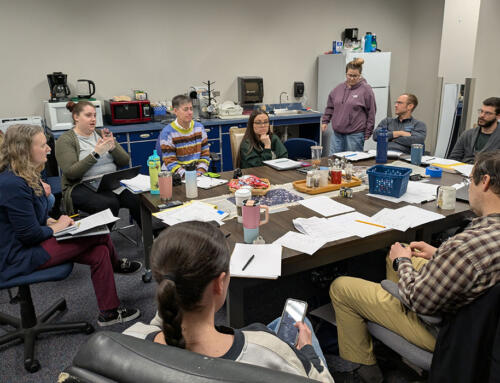As students enter a season of state-mandated testing, Educational Service District 112 has released a catchy music video that takes some of the mystery out of the process.
“Teacher’s got SBAC”—pronounced “S-BAC”—is a rap performed by staff and students at Vancouver’s Hough Elementary School. As they rap, dance and beatbox across the screen, they share some of the reasons behind state assessments and the benefits of taking them.
(SBAC stands for the Smarter Balanced Assessment Consortium, a multi-state group that developed the tests that are used in Washington and many other states.)
“Schools throughout Washington use state assessment results to make improvements in teaching and learning,” said Mike Nerland, ESD 112 assistant superintendent of Teaching and Learning. “Assessment results provide information that allow schools to identify strengths and gaps in curriculum and instruction. They also give educators data that enable them to design teaching strategies to boost student achievement.”
The video launches ESD 112’s “EDU-speakin’ to me?!” video series on social media. EDU-speakin’ is a creation of the agency’s Communications and Public Engagement department.
“One day we were talking about how confusing education terms can be for us as parents of school-age children—even though we work with this jargon every day at ESD 112,” said communications manager Sarah Coomber.
“So we thought, ‘What if we made learning education jargon fun?’” said graphic designer and copywriter Melissa Burt.
Soon they were brainstorming with communications manager Michele McKeag Larsen and video producer Rose Yandell, targeting topics that might help parents feel more comfortable in school conversations and conferences.
So far the EDU-speakin’ group has tackled Common Core/CCSS, DIBELS, magnet schools, NGSS, STEM/STEAM, BYOD and SBAC—with more to come. The videos are available at https://www.esd112.org/eduspeak/ and will be featured on social media throughout the spring.
To make sure the project is answering a real need, the EDU-speakin’ group shared one video and survey with ESD 112 colleagues. Of 65 respondents, 70.8 percent said they also have been confused by various education terms, and 21.5 percent more admitted to having been “somewhat” confused.
When they shared the same survey with families in Hockinson School District, they found that out of 45 respondents, 64.4 percent have been confused and 26.7 percent have been “somewhat confused.”
“We knew we were on to something,” said Larsen. “Now we’re on a mission to make public education understandable to everyone.”



